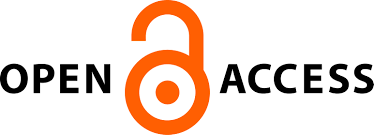Once Upon a Time-Integrating Fairy Tales Into Physics Education: The Case of Mechanics
Article Main Content
Fairy tales have long captivated the imaginations of children and adults alike, offering enchanting narratives that transport readers to magical realms. However, the potential for a unique and engaging approach to science education lies beneath the surface of these captivating stories. This paper explores the use of fairy tales as a pedagogical tool in physics education. By integrating scientific concepts into the fabric of well-known fairy tales, educators can leverage the power of storytelling to ignite curiosity, promote critical thinking, and enhance understanding of complex physics principles. This interdisciplinary approach bridges the gap between the fantastical and the factual, fostering a deeper appreciation for scientific inquiry and encouraging students to participate actively in their learning journey.
References
-
Cremin, T., Flewitt, R., Swann, J., Faulkner, D., & Kucirkova, N. (2018). Storytelling and story-acting: Co-construction in action. Journal of Early Childhood Research, 16(1), 3–17. https://doi.org/10.1177/1476718X17750205
Google Scholar
1
-
Fleer, M., (2013). Affective Imagination in Science Education: Determining the Emotional Nature of Scientific and Technological Learning of Young Children. Res Sci Educ 43, 2085–2106. https://doi.org/10.1007/s11165-012-9344-8
Google Scholar
2
-
Kazantzidou, D., Kotsis, K. (2017). Errors and inaccuracies about the environment in fairy tales: An analysis of written text. Science Education: Research and Praxis, Special Issue, 61, 9-23. ISSN:1792-3166, www.lib.uoi.gr/serp
Google Scholar
3
-
Kazantzidou, D. & Kotsis, K.T. (2023). Ozone Layer Depletion in Children’s Books Available in Greece: examining accuracy in the representation of causes of ozone layer depletion in texts. Children’s Literature in Education, 1–19. https://doi.org/10.1007/s10583-023-09524-0
Google Scholar
4
-
Koutníková,M., (2017).The Application of Comics in Science Education. Acta Educationis Generalis,7(3) 88-98. https://doi.org/10.1515/atd-2017-0026
Google Scholar
5
-
Kucheriavyi, O. H. (2022, June). Didactic fairy tale designing as a key to proactive training of Physics and Mathematics at primary schools. Journal of Physics: Conference Series, 2288(1), 012034. IOP Publishing. https://doi.org/10.1088/1742-6596/2288/1/012034
Google Scholar
6
-
Mason, L., Zaccoletti, S., Carretti, B., Scrimin, S., & Diakidoy, I. A. N. (2019). The role of inhibition in conceptual learning from refutation and standard expository texts. International Journal of Science and Mathematics Education, 17, 483-501. https://doi.org/10.1007/s10763-017-9874-7
Google Scholar
7
-
Michelsen, C. (2017). Hans Christian Ørsted, narratives, oeuvres, and physics education. Physics Education, 52(3), 035004. https://doi.org/10.1088/1361-6552/aa5e19
Google Scholar
8
-
Rahman, F. (2017). The revival of local fairy tales for children education. Theory and Practice in Language Studies, 7(5), 336. http://dx.doi.org/10.17507/tpls.0705.02
Google Scholar
9
-
Sobirjonovich, S. I. (2022). Fairy Tales and Their Role in Education of Preschool Children. Barqarorlik Va Yetakchi Tadqiqotlar Onlayn Ilmiy Jurnali, 150-155. http://sciencebox.uz/index.php/jars/article/view/3090/2821
Google Scholar
10
-
Woolfolk Hoy, A. (2013). A Reflection on the Place of Emotion in Teaching and Teacher Education. In M. Newberry, A. Gallant, and P. Riley (Eds.) Emotion and School: Understanding how the Hidden Curriculum Influences Relationships, Leadership, Teaching, and Learning (Advances in Research on Teaching, Vol. 18), Emerald Group Publishing Limited, Bingley, pp. 255-270. https://doi.org/10.1108/S1479-3687(2013)0000018017.
Google Scholar
11
Most read articles by the same author(s)
-
Konstantinos T. Kotsis,
The Significance of Experiments in Inquiry-based Science Teaching , European Journal of Education and Pedagogy: Vol. 5 No. 2 (2024) -
Konstantinos T. Kotsis,
Integrating ChatGPT into the Inquiry-Based Science Curriculum for Primary Education , European Journal of Education and Pedagogy: Vol. 5 No. 6 (2024) -
Konstantinos T. Kotsis,
Georgios Stylos,
Pinelopi Houssou,
Matthaios Kamaratos,
Students’ Perceptions of the Heat and Temperature Concepts: A Comparative Study between Primary, Secondary, and University Levels , European Journal of Education and Pedagogy: Vol. 4 No. 1 (2023) -
Konstantinos T. Kotsis,
Integrating Inquiry-based Learning in the New Greek Primary Science Curriculum , European Journal of Education and Pedagogy: Vol. 5 No. 6 (2024) -
Vasiliki Samara,
Konstantinos T. Kotsis,
Educational Robotics in Primary Education in Greece: Methodological Approaches and Attitudes of Teachers. A Bibliographic Review , European Journal of Education and Pedagogy: Vol. 4 No. 2 (2023) -
Konstantinos T. Kotsis,
Georgios Stylos,
Relationship of IQ with Alternative Ideas of Primary School Students on the Concepts of Force and Weight , European Journal of Education and Pedagogy: Vol. 4 No. 1 (2023) -
Konstantinos T. Kotsis,
Georgia Nikou,
Georgios Stylos,
The Readiness of Preservice Teachers for the Distance Education of Physics in Greece , European Journal of Education and Pedagogy: Vol. 4 No. 3 (2023) -
Konstantinos T. Kotsis,
Nikoleta Siarka,
Georgios Stylos,
The Science and Technology Courses that Choose the Preservice Teachers during their Studies in Greece , European Journal of Education and Pedagogy: Vol. 4 No. 3 (2023)








